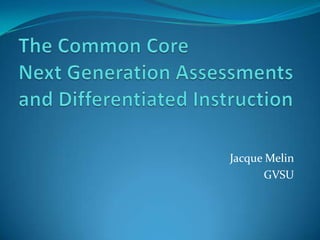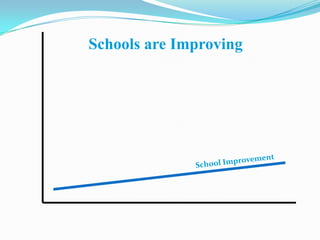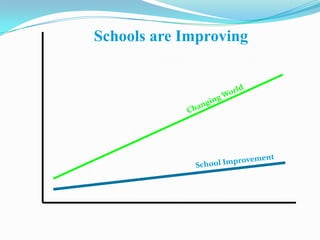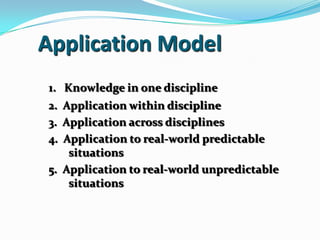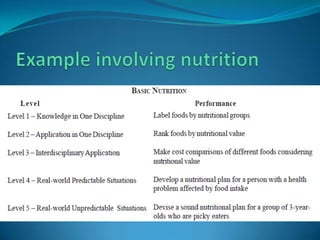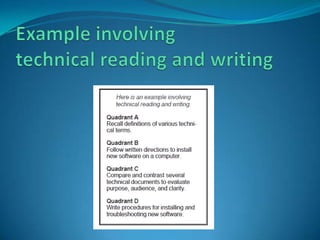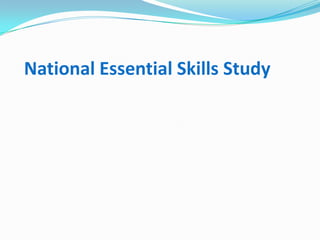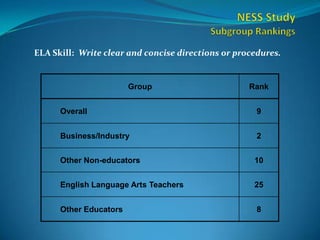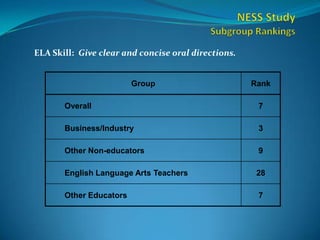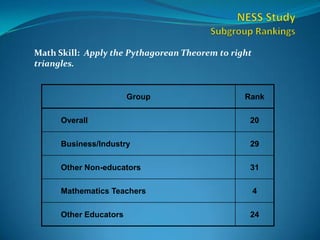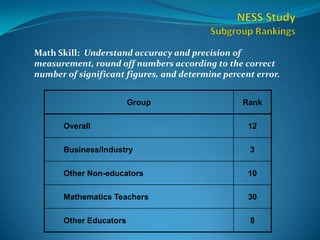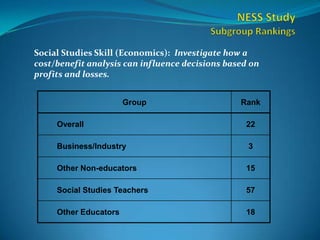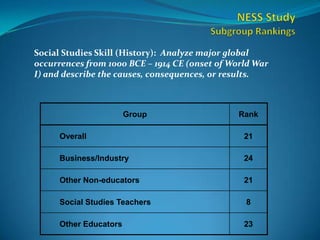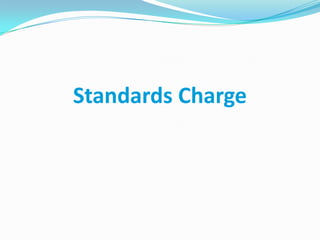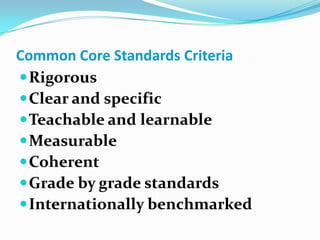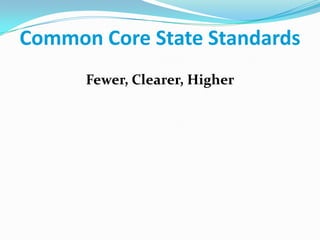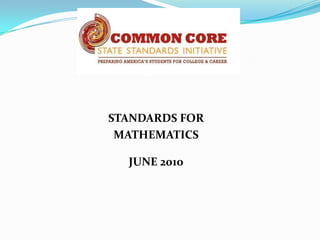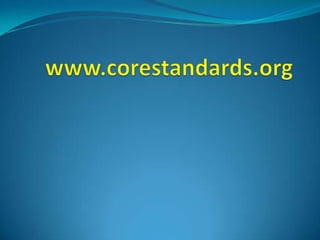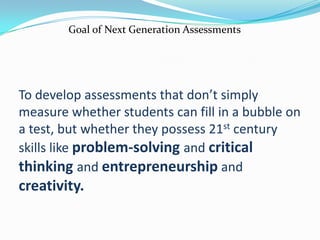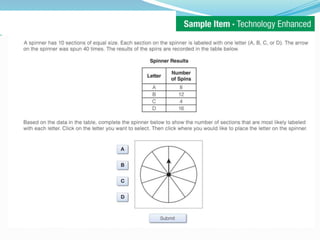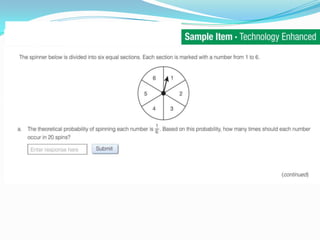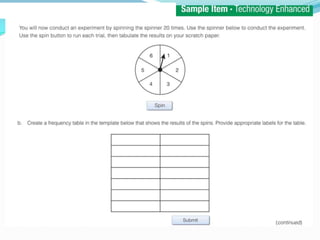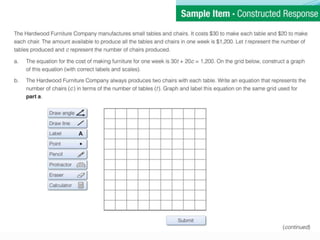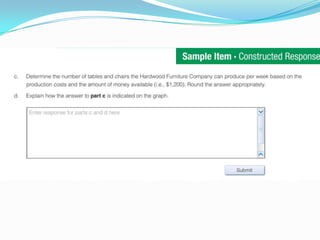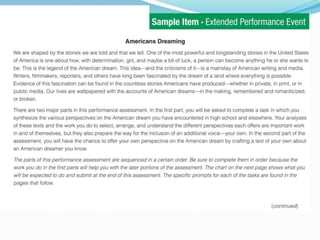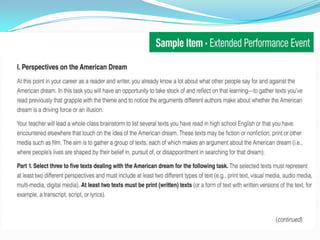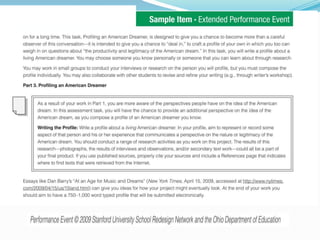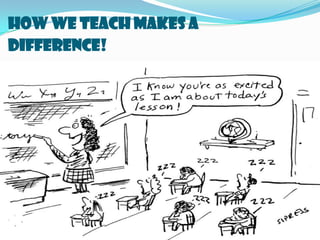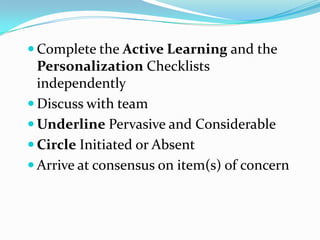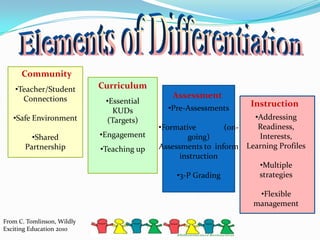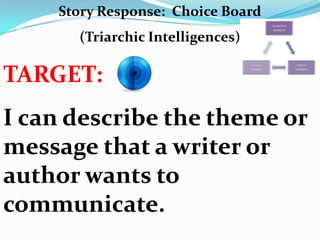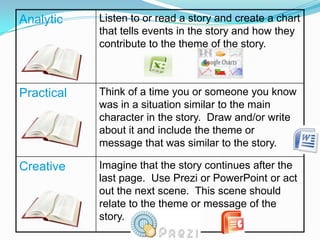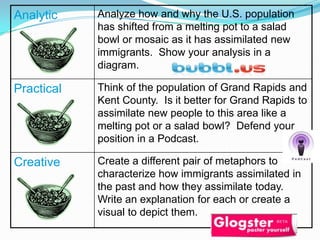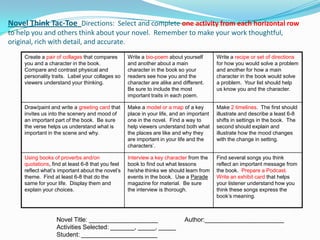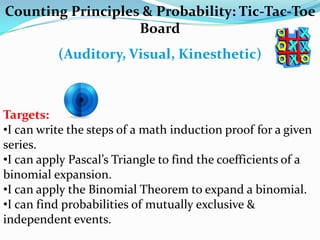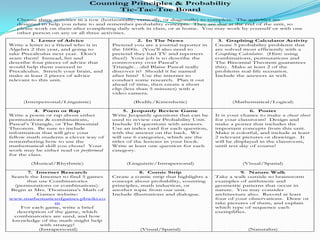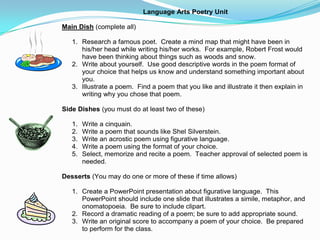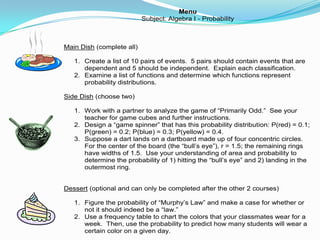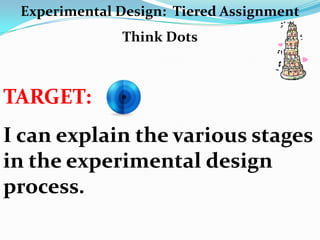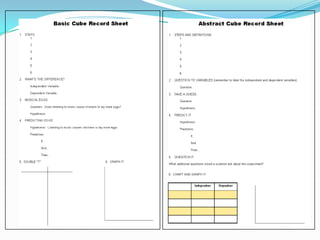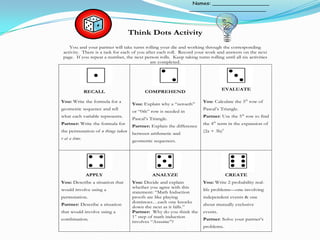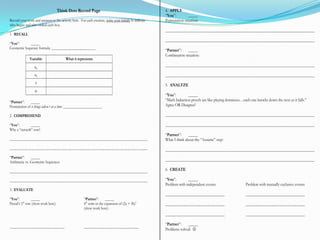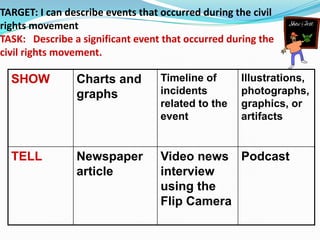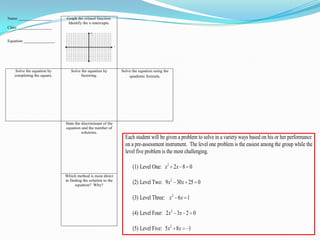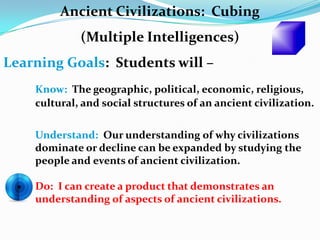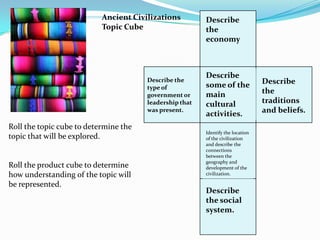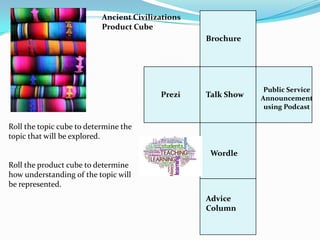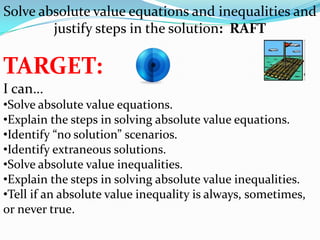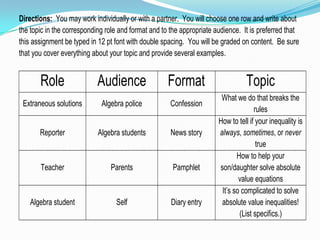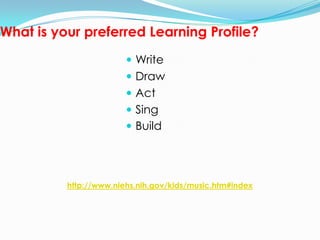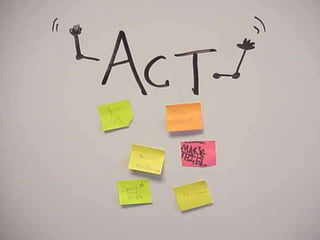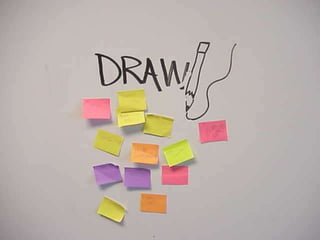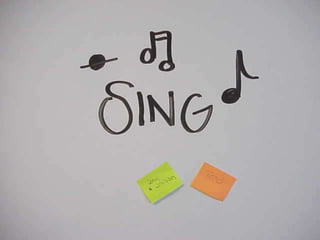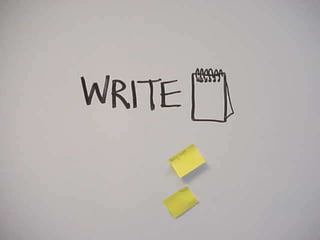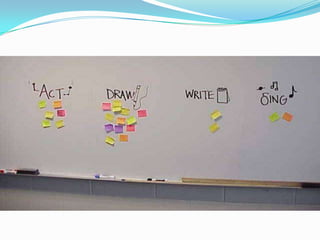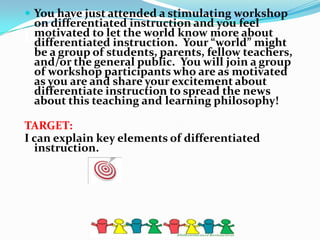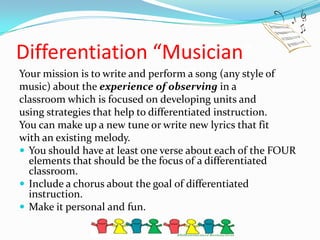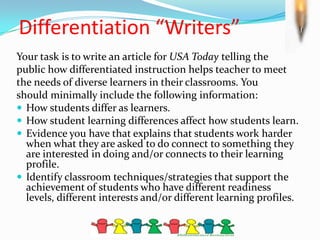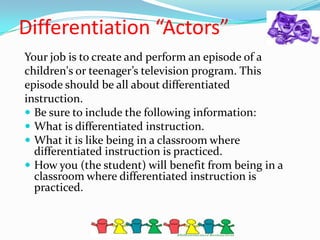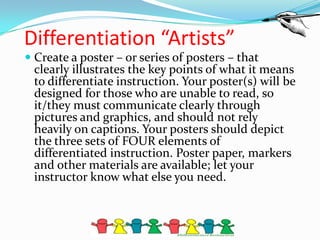Next generation assessments
- 1. The Common CoreNext Generation Assessmentsand Differentiated InstructionJacque MelinGVSU
- 2. EXTERNAL DRIVERSEducation TrendsChanging Society/WorkplaceTechnologyGlobal CompetitionEconomic TrendsDemographics
- 3. Schools are ImprovingSchool Improvement
- 4. Schools are ImprovingChanging WorldSchool Improvement
- 5. Rigor/Relevance For All Students
- 6. Knowledge Taxonomy1. Awareness2. Comprehension 3. Application4. Analysis5. Synthesis 6. Evaluation
- 7. Application Model1.Knowledge in one discipline2. Application within discipline3. Application across disciplines4. Application to real-world predictable situations5. Application to real-world unpredictable situations
- 8. LevelsBloom’sC DA B654321 2 3 4 51Application
- 10. Example involving technical reading and writing
- 11. National Essential Skills Study
- 12. NESS StudySubgroup RankingsELA Skill: Write clear and concise directions or procedures.
- 13. NESS StudySubgroup RankingsELA Skill: Give clear and concise oral directions.
- 14. NESS StudySubgroup RankingsMath Skill: Apply the Pythagorean Theorem to right triangles.
- 15. NESS StudySubgroup RankingsMath Skill: Understand accuracy and precision of measurement, round off numbers according to the correct number of significant figures, and determine percent error.
- 16. NESS StudySubgroup RankingsSocial Studies Skill (Economics): Investigate how a cost/benefit analysis can influence decisions based on profits and losses.
- 17. NESS StudySubgroup RankingsSocial Studies Skill (History): Analyze major global occurrences from 1000 BCE – 1914 CE (onset of World War I) and describe the causes, consequences, or results.
- 18. Standards Charge
- 19. Common Core Standards CriteriaRigorousClear and specificTeachable and learnableMeasurableCoherentGrade by grade standardsInternationally benchmarked
- 20. Common Core State StandardsFewer, Clearer, Higher
- 21. STANDARDS FORENGLISH LANGUAGE ARTS&LITERACY IN HISTORY/SOCIAL STUDIES,SCIENCE, AND TECHNICAL SUBJECTSJUNE 2010
- 24. Goal of Next Generation AssessmentsTo develop assessments that don’t simply measure whether students can fill in a bubble on a test, but whether they possess 21st century skills like problem-solving and critical thinking and entrepreneurship and creativity.
- 41. How We Teach Makes A Difference!
- 42. Complete the Active Learning and the Personalization Checklists independentlyDiscuss with teamUnderline Pervasive and ConsiderableCircle Initiated or AbsentArrive at consensus on item(s) of concern
- 43. Elements of DifferentiationCommunityCurriculumTeacher/Student Connections
- 44. Safe Environment
- 45. Shared PartnershipAssessmentEssential KUDs (Targets)
- 46. Engagement
- 48. Formative (on-going)Assessments to inform instruction3-P Grading
- 49. Addressing Readiness, Interests, Learning Profiles
- 51. Flexible managementFrom C. Tomlinson, Wildly Exciting Education 2010
- 52. Thinking About the Sternberg IntelligencesANALYTICALLinear – Schoolhouse Smart - SequentialShow the parts of _________ and how they work.Explain why _______ works the way it does.Diagram how __________ affects __________________.Identify the key parts of _____________________.Present a step-by-step approach to _________________.Streetsmart – Contextual – Focus on UsePRACTICALDemonstrate how someone uses ________ in their life or work.Show how we could apply _____ to solve this real life problem ____.Based on your own experience, explain how _____ can be used.Here’s a problem at school, ________. Using your knowledge of ______________, develop a plan to address the problem.CREATIVEInnovator – Outside the Box – What If - ImproverFind a new way to show _____________.Use unusual materials to explain ________________.Use humor to show ____________________.Explain (show) a new and better way to ____________.Make connections between _____ and _____ to help us understand ____________.Become a ____ and use your “new” perspectives to help us think about ____________.
- 53. Story Response: Choice Board(Triarchic Intelligences)TARGET:I can describe the theme or message that a writer or author wants to communicate.
- 55. Immigration: Choice Board(Triarchic Intelligences)TARGET:I can explain the meaning of “melting pot,” “mosaic,” and “salad bowl” as they relate to immigration in America.
- 57. Story Elements: Tic-Tac-Toe Board(Auditory, Visual, Kinesthetic)Target: I can describe the elements of a story (characters, setting, plot).
- 58. Novel Think Tac-Toe Directions: Select and complete one activity from each horizontal row to help you and others think about your novel. Remember to make your work thoughtful, original, rich with detail, and accurate.Novel Title: ____________________ Author:_______________________Activities Selected: _______, _____, _____Student: ______________________
- 59. Counting Principles & Probability: Tic-Tac-Toe Board(Auditory, Visual, Kinesthetic)Targets: I can write the steps of a math induction proof for a given series.
- 60. I can apply Pascal’s Triangle to find the coefficients of a binomial expansion.
- 61. I can apply the Binomial Theorem to expand a binomial.
- 62. I can find probabilities of mutually exclusive & independent events.
- 63. Poetry: Learning MenuProbability: Learning MenuTargets: Not determined
- 66. Experimental Design: Tiered AssignmentThink DotsTARGET:I can explain the various stages in the experimental design process.
- 67. BasicBasic
- 68. Basic Cube Record Sheet.STEPS 1. 2. 3. 4. 5. 6. .WHAT’S THE DIFFERENCE? Independent Variable - Dependent Variable -.MUSICAL EGGS Question: Does listening to music cause chickens to lay more eggs? Hypothesis:.PREDICTING EGGS Hypothesis: Listening to music causes chickens to lay more eggs. Prediction: If… And… Then…5. DOUBLE “T” 6. GRAPH IT
- 71. Show-And-Tell BoardsAll students have the same TASK, but have a choice of SHOW AND TELL.Top row – what they could showBottom row – what they could tellNeed 1 SHOW & 1 TELL
- 72. TARGET: I can write in a technical format.TASK: Write a set of directions for a household task or school activity.
- 73. TARGET: I can describe events that occurred during the civil rights movementTASK: Describe a significant event that occurred during the civil rights movement.
- 74. Graphing:Cubes (novelty)TARGET: I can solve a problem in a variety of ways.
- 76. Ancient Civilizations: Cubing(Multiple Intelligences)Learning Goals: Students will –Know: The geographic, political, economic, religious, cultural, and social structures of an ancient civilization.Understand: Our understanding of why civilizations dominate or decline can be expanded by studying the people and events of ancient civilization. Do: I can create a product that demonstrates an understanding of aspects of ancient civilizations.
- 77. Ancient Civilizations Topic CubeDescribe the economyDescribe some of the main cultural activities.Describe the type of government or leadership that was present.Describe the traditions and beliefs.Roll the topic cube to determine the topic that will be explored.Roll the product cube to determine how understanding of the topic will be represented.Identify the location of the civilization and describe the connections between the geography and development of the civilization.Describe the social system.
- 78. Ancient Civilizations Product CubeBrochurePublic Service Announcement using PodcastTalk ShowPreziRoll the topic cube to determine the topic that will be explored.Roll the product cube to determine how understanding of the topic will be represented.WordleAdvice Column
- 79. Fahrenheit 451: RAFTTARGET:I can identify specific characteristics of a character.
- 80. I can write with the voice of a character.
- 81. I can find evidence to support my perspective and include it in my letter.
- 82. I can correctly address an envelope.
- 83. Solve absolute value equations and inequalities and justify steps in the solution: RAFTTARGET:I can…Solve absolute value equations.
- 84. Explain the steps in solving absolute value equations.
- 85. Identify “no solution” scenarios.
- 87. Solve absolute value inequalities.
- 88. Explain the steps in solving absolute value inequalities.
- 89. Tell if an absolute value inequality is always, sometimes, or never true.
- 90. Choices involving Learning ProfileThe “Profiler”
- 91. What is your preferred Learning Profile?WriteDrawActSingBuildhttp://www.niehs.nih.gov/kids/music.htm#index
- 97. Differentiation “Profiler”You have just attended a stimulating workshop on differentiated instruction and you feel motivated to let the world know more about differentiated instruction. Your “world” might be a group of students, parents, fellow teachers, and/or the general public. You will join a group of workshop participants who are as motivated as you are and share your excitement about differentiate instruction to spread the news about this teaching and learning philosophy!TARGET: I can explain key elements of differentiated instruction.
- 98. Differentiation “Musician”Your mission is to write and perform a song (any style ofmusic) about the experience of observing in aclassroom which is focused on developing units andusing strategies that help to differentiated instruction.You can make up a new tune or write new lyrics that fitwith an existing melody.You should have at least one verse about each of the FOUR elements that should be the focus of a differentiated classroom.Include a chorus about the goal of differentiated instruction. Make it personal and fun.
- 99. Differentiation “Writers”Your task is to write an article for USA Today telling thepublic how differentiated instruction helps teacher to meetthe needs of diverse learners in their classrooms. Youshould minimally include the following information:How students differ as learners.How student learning differences affect how students learn.Evidence you have that explains that students work harder when what they are asked to do connect to something they are interested in doing and/or connects to their learning profile.Identify classroom techniques/strategies that support the achievement of students who have different readiness levels, different interests and/or different learning profiles.
- 100. Differentiation “Builders”Your group has been commissioned to build a model of a differentiated classroom for a local museum featuring best practices in education. Your model must accurately reflect the FOUR elements of differentiated instruction in a classroom where these elements are being practiced. You must be able to explain your model to museum officials.
- 101. Differentiation “Actors”Your job is to create and perform an episode of achildren's or teenager’s television program. Thisepisode should be all about differentiatedinstruction.Be sure to include the following information:What is differentiated instruction.What it is like being in a classroom where differentiated instruction is practiced.How you (the student) will benefit from being in a classroom where differentiated instruction is practiced.
- 102. Differentiation “Artists”Create a poster – or series of posters – that clearly illustrates the key points of what it means to differentiate instruction. Your poster(s) will be designed for those who are unable to read, so it/they must communicate clearly through pictures and graphics, and should not rely heavily on captions. Your posters should depict the three sets of FOUR elements of differentiated instruction. Poster paper, markers and other materials are available; let your instructor know what else you need.
- 103. Please copy this web address:http://tinyurl.com/KenowaHillsDIF
Editor's Notes
- #19: Create the next generation of K-12 standardsAll students college and career ready in literacy and mathematicsNo later than end of high schoolBuild upon the foundation laid by the statesCreate a vision of what it means to be a literate student in the twenty-first centuryStudents who readily undertake the close, attentive reading that is the heart of understanding and enjoying complex works of literature.Habitually perform the critical reading necessary to pick carefully through the staggering amount of informationThey actively seek wide, deep and thoughtful engagement with high-quality literary and informational text that builds knowledge, enlarges experiences and broadens worldviews.They demonstrate cogent reasoning and use evidence that is essential for deliberations and responsible citizenship
- #20: Rigor high-level cognitive demands by asking students to demonstrate deep conceptual understanding through the application of content knowledge and skills to new situations. sufficient guidance and clarity so that they are teachable, learnable, and measurable. Teachable and learnable: Provide sufficient guidance for the design of curricula and instructional materials. The standards must be reasonable in scope, instructionally manageable, and promote depth of understanding.The standards will not prescribe how they are taught and learned but will allow teachers flexibility to teach and students to learn in various instructionally relevant contexts.Measureable: Student attainment of the standards should be observable and verifiable and the standards can be used to develop broader assessment frameworksCoherent: The standards should convey a unified vision of the big ideas and supporting concepts within a discipline and reflect a progression of learning that is meaningful and appropriate.Grade-by-grade standards: The standards will have limited repetition across the grades or grade spans to help educators align instruction to the standards.Internationally benchmarked: The standards will be informed by the content, rigor, and organization of standards of high-performing countries so that all students are prepared for succeeding in our global economy and society.
- #29: It is important to note here that students in Arkansas are already accustomed to explaining their thinking.Do you know that Arkansas is one of only ________ states that currently requires students to write?

